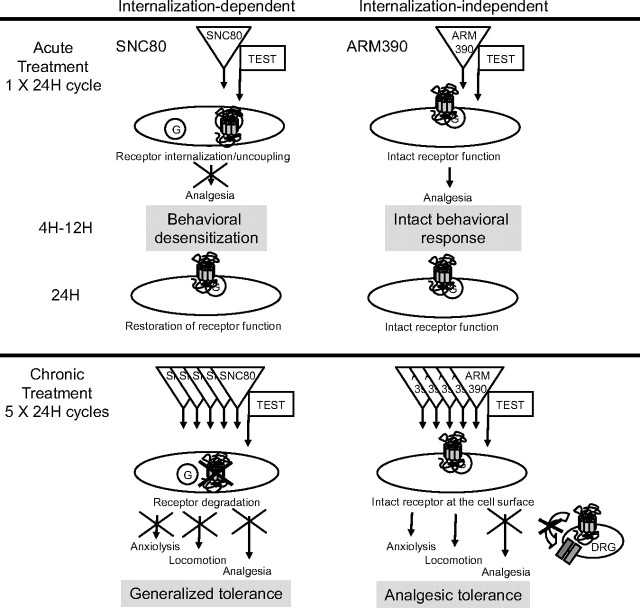Figure 7.
Two distinct paths toward analgesic tolerance. The scheme summarizes receptor analysis at the cellular level (subcellular localization, receptor number, G-protein coupling, and Ca2+ channel activity) and behavioral data obtained throughout this study. Data highlight the distinct adaptive processes elicited by chronic treatment using either the high-internalizing agonist (SNC80, left) or the low-internalizing agonist (ARM390, right). Top, A single 24 h treatment cycle leads to restored or intact receptors, with seemingly identical functional properties both at cellular and behavioral levels. Bottom, Five 24 h treatment cycles produce highly distinct forms of tolerance. Chronic SNC80 downregulates receptors throughout the nervous system, as classically described in cellular models, leading to generalized tolerance at the behavioral level. Chronic ARM390 does not modify receptor expression at the cell surface, but decreases δ receptor-mediated Ca2+ channel responses in DRGs. Further, tolerance develops only for analgesic but not locomotor or emotional responses, indicating that in vivo adaptations occur specifically at the level of pain processing pathways.

